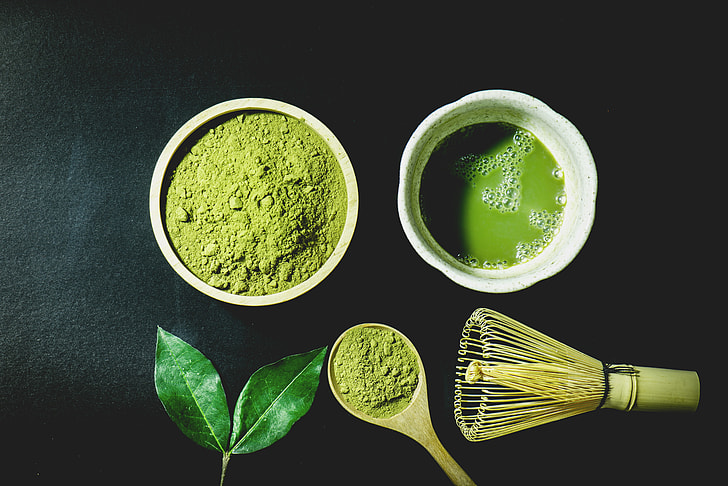If You Want the Best in Every Bite, Choose Dark Chocolate
Close your eyes and imagine you see chocolate ice cream, chocolate cake, tiramisu, and a chocolate croissant laid out in front of you, and you taste each one. First, you taste the perfectly cold and creamy chocolate ice cream, then a decadent multilayer chocolate sponge cake, next, a Tiramisu that strikes the impeccable balance of the bitter coffee and the sweet mascarpone filling with the shavings of chocolate on top, and lastly, a flaky and airy croissant with a light crunch and a rush of chocolate flavor that lingers on your tongue. What do all of these dishes have in common? They are all made with dark chocolate.
Dark chocolate is better than milk chocolate because of the health benefits eating dark chocolate provides for your body. One of the health benefits is the improvement of brain function. For example, the research done at the Taube Center for the Aging Brain at Columbia University found that there was a 14% increase in memory capacity in 12 weeks because of the increased intake of flavonoids, plant chemicals full of antioxidants and immune system benefits, found in dark chocolate. In a National Institute of Health article, the study suggests that there should be consumption of about 20 grams of dark chocolate a day to see improvement in the brain. The influx of flavonoids can help with recalling current and old memories because the cacao in dark chocolate contains over 800 compounds of nutrients that are beneficial for the brain, like amino acids, fatty acids, phenyl ethylene, and methyl xanthine.
Another health benefit of dark chocolate is that it can improve heart function and help contribute to preventing heart disease. The increased intake of flavonoids also benefits the heart. It can increase blood flow up to 60% which means that blood pressure levels, blood circulation, and cholesterol levels are able to decrease, lowering the risk of inflammation around the heart. This is significant because increased inflammation around the heart can lead to future heart attacks. A Harvard nutrition article cites studies that say a daily intake of 6 grams of dark chocolate can contribute to preventing heart disease.
In addition, cacao also contains antidiabetic agents. The National Center for Biotechnology and Information (which is part of the United States National Library of Medicine) writes in an article that a study found a lower risk of type two diabetes in the subjects that had a higher intake of cacao. Cacao and flavonoids help increase insulin sensitivity which can prevent inflammatory issues that are known to be part of type two diabetes.
In comparison to milk chocolate, dark chocolate is the simpler of the two. It only has two main ingredients: cacao beans and sugar while milk chocolate’s three main ingredients are milk, sugar, and cacao. Most milk chocolate has between 10- 50% cacao. Critics might say that milk chocolate is better because of its sweetness, and texture and that the milk used in milk chocolate leaves an overall sweeter and smoother taste and might be the more popular chocolate among children and adults. Dark chocolate, compared to milk chocolate, will seem more bitter, which can be a major turn-off for people. However, dark chocolate can have a range between 50-90% Cacao. If someone has a sweeter preference for their chocolate, it can be tailored to that. In the same way, if someone wants less sweet chocolate, there is flexibility. Milk chocolate does not have that capacity because of its mostly one-note sweetness. With milk chocolate, it is easier to overindulge in sugar leaving a person feeling sick. With dark chocolate, you can still enjoy that delicious chocolate taste without eating yourself sick with the sugar.
It is true that dark chocolate has more calories than milk chocolate and some may think that eating too much dark chocolate can lead to weight gain because of the calories. Nonetheless, that notion hasn’t been proven in any studies to be a definite side effect of eating dark chocolate.
Another positive aspect of dark chocolate is the versatility it has in cooking and baking. Dark chocolate can be used to create a range of savory dishes like Mole, a traditional sauce used in Mexican cuisine, to sweeter dishes like crepes. Because dark chocolate is flexible with the level of sweetness, it is more easily paired with different foods. The intensity of its flavor is able to elevate the flavor of any dish it is paired with. In a Today article surveying 11 top pastry chefs around the country about their preference between dark chocolate or milk chocolate, there was a 6-4 vote in favor of dark chocolate. Even professionals that use food in their career prefer dark chocolate.
Overall, dark chocolate is healthier for a person. One is able to consume it more often without serious repercussions. It has much more variety in flavor and how it can be consumed from breakfasts to dinners to desserts. The next time you have the choice between dark chocolate and milk chocolate, remember which is the perfect option—dark chocolate.























